Last Updated on July 31, 2024 by teamobn
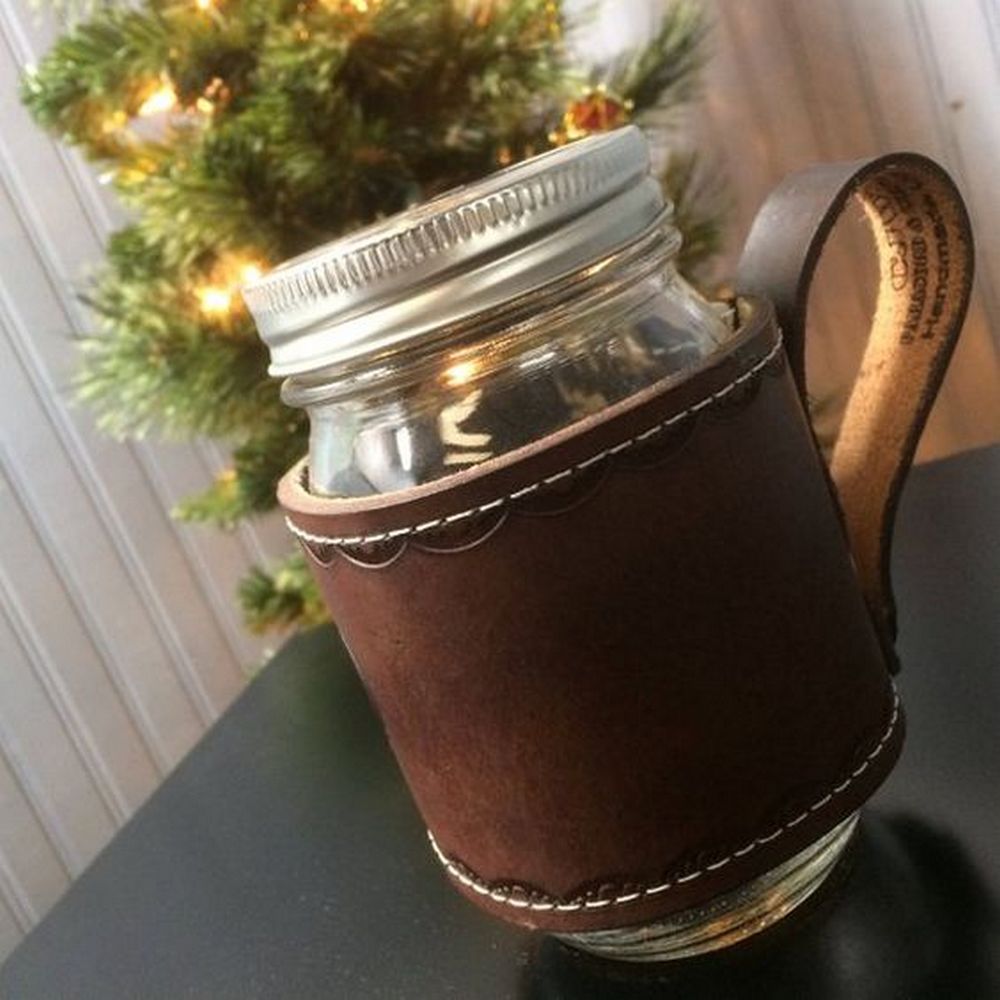
Mason jars are a versatile and popular choice for canning and storage. They come in a variety of sizes, making them perfect for everything from jams and jellies to soups and stews. They are also popular for decorative purposes and can be found in a variety of colours and styles.
Two months ago, I won a dozen mason jars in a raffle at my son’s school. It was a coveted prize that was very popular among mothers like me. However, I have never really fancied mason jars so I just stashed them away in our stock room. I thought they were bulky and heavy. The absence of a handle – at least from the jars that I won – made it less appealing to me.
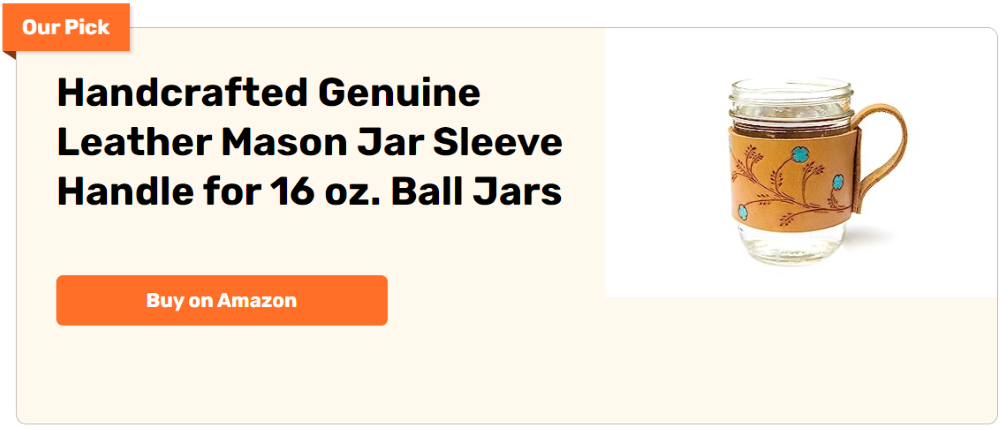
One day, while I was cleaning, I stumbled across a few mason jars. Seeing how they had been gathering dust, I decided that I better put them to good use. So I fired up my computer and searched for ways to use mason jars. I found a few interesting ideas, including using them as vases, storage containers, or even drinking glasses. With a little bit of creativity, mason jars can be turned into all sorts of useful things.

I found a great DIY mason jar project online that gave my mason jars a leather sleeve and handle. The project was simple and only took a few minutes, but it made a big difference in the overall look of the jars. They now have a much more polished and classy appearance.
If you’re a fan of mason jars, you’re going to love these leather sleeves and handles. They’re a great way to add a bit of personality to your jars, and they’re also very practical. The leather is durable and will help to keep your jars from slipping out of your hands.
Contents
Crafting a Leather Sleeve and Handle
Materials
- Heavy-duty leather
- Snap fasteners
- Waxed cord
Tools
- Leather punch
- X-acto knife (but a very sharp universal cutter would do)
- L-Square (to help you achieve the perfect rectangle for your leather sleeve)
- Setter tool or snaptool
- Hammer
Steps
Well, gathering all the needed materials and tools for this project should be the first step. Next, to make a leather sleeve for your mason jar, first, measure the diameter of the jar. This will be the length of the leather sleeve. You can measure the jar by rolling it in the leather, or by using a tape measure to measure the outside of the jar and add an inch for the margin.
To ensure your leather sleeve has a perfect rectangle shape, use the L square. This will give your sleeve a clean, polished look. Be sure to measure the length and width of your sleeve, and mark the dimensions on the L square. Then, cut along the lines you’ve drawn to create a perfect rectangle.
Once you have cut along the leather handle, you will need to make sure that it is not too big or too small for the user. If it is too big, it will be difficult for the user to grip and hold onto the jar. If it is too small, the jar may be uncomfortable to use.
To install the snap fasteners, first use the snap tool to make holes in the overlapped leather parts, as well as at each end of the handle. Then insert the snap fastener through the holes and secure them in place. This will join the leather sleeve and handles together. Finally, enjoy a cup of coffee!
Click on any image to start the lightbox display. Use your Esc key to close the lightbox.
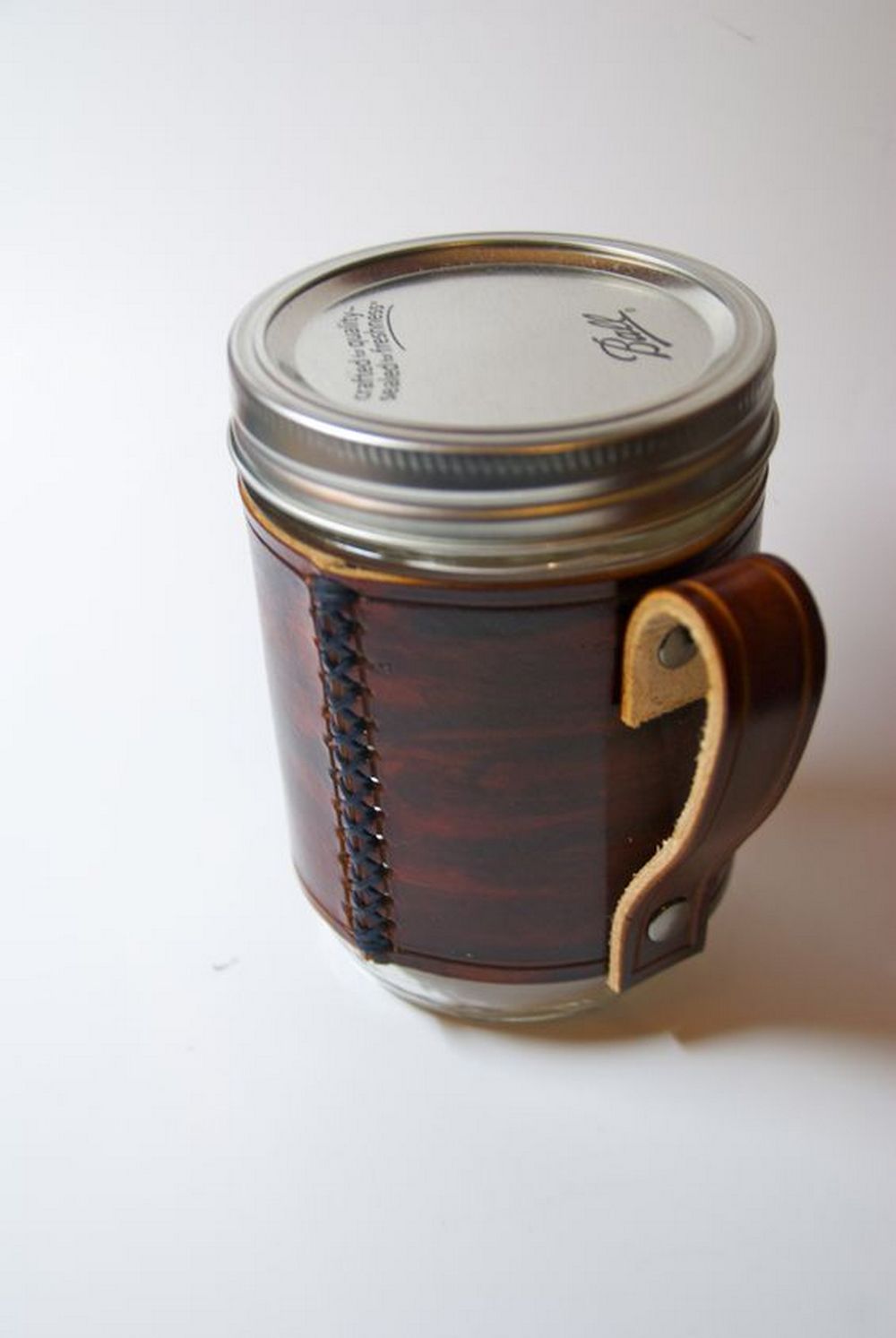

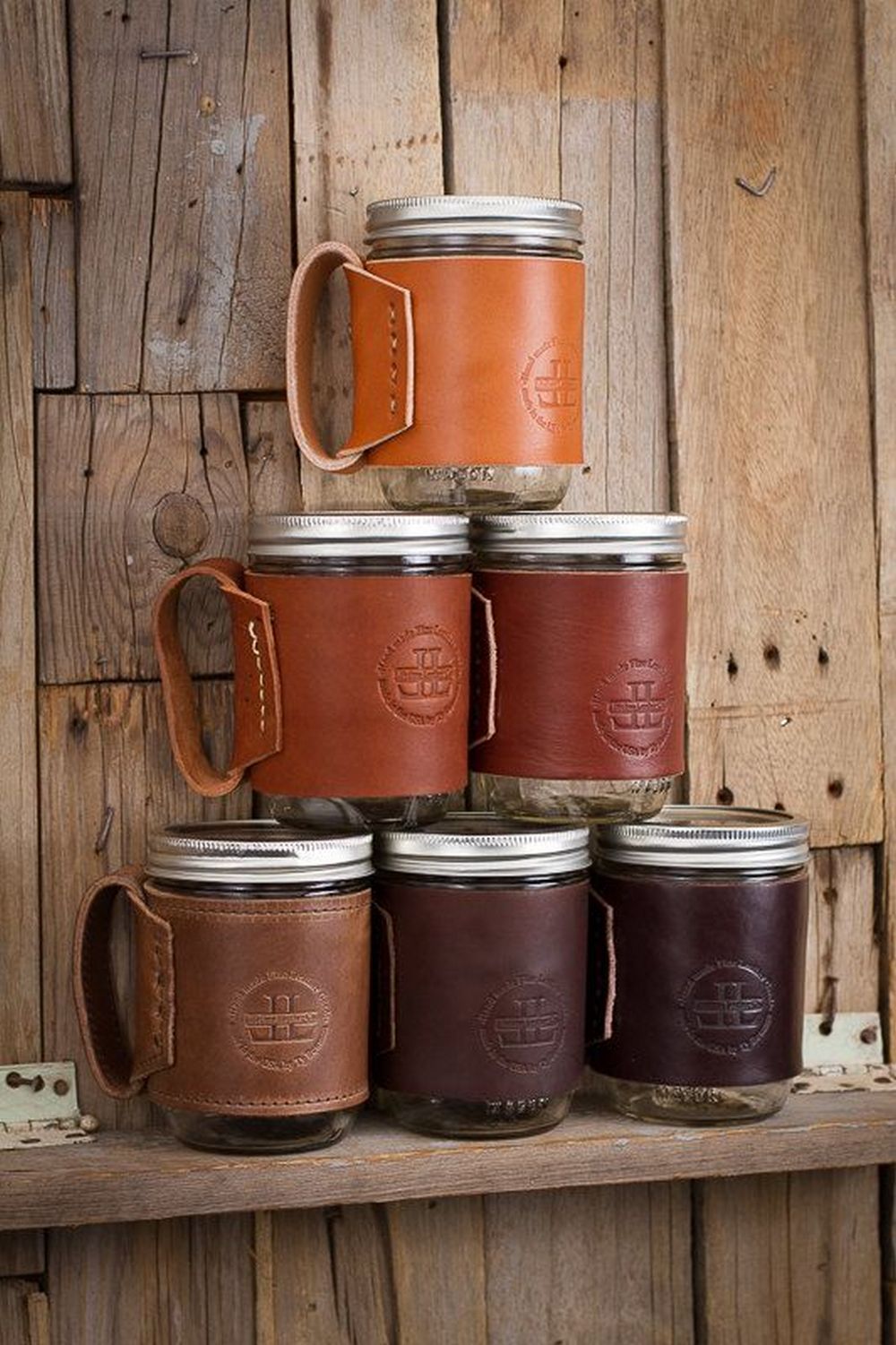
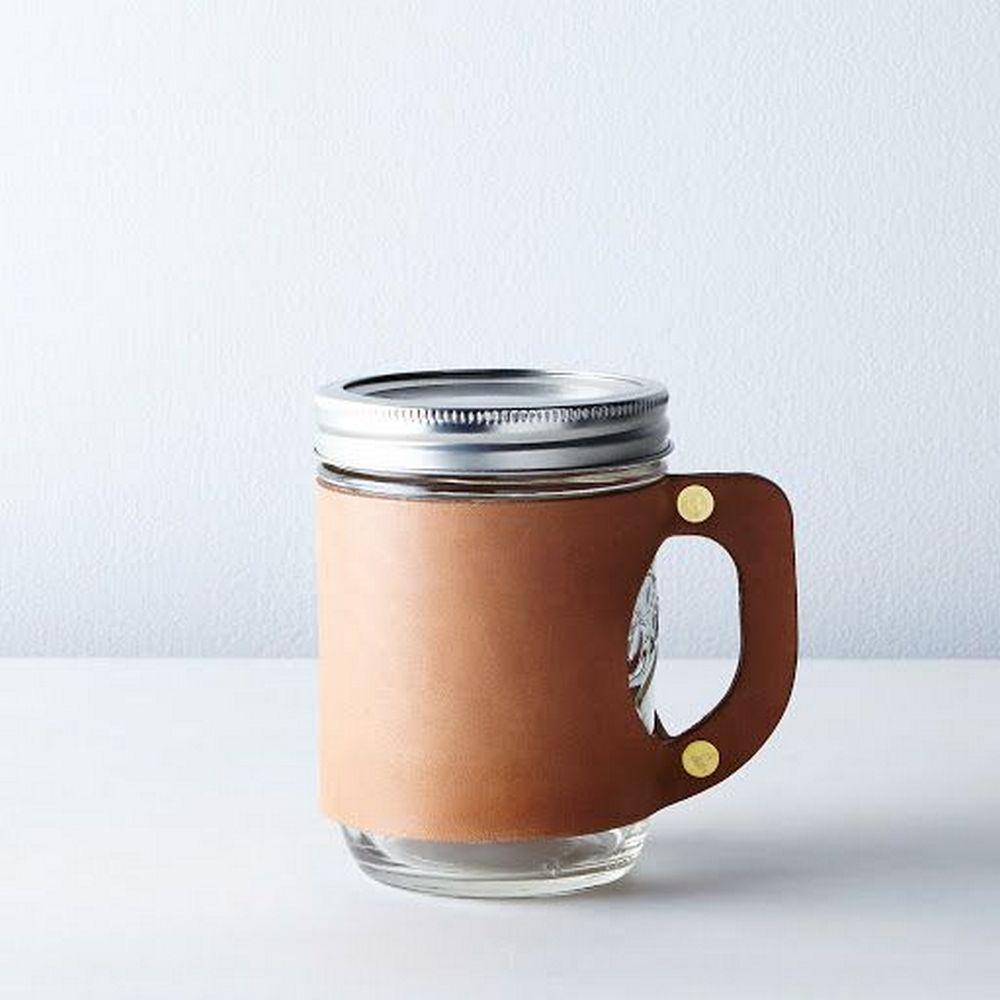
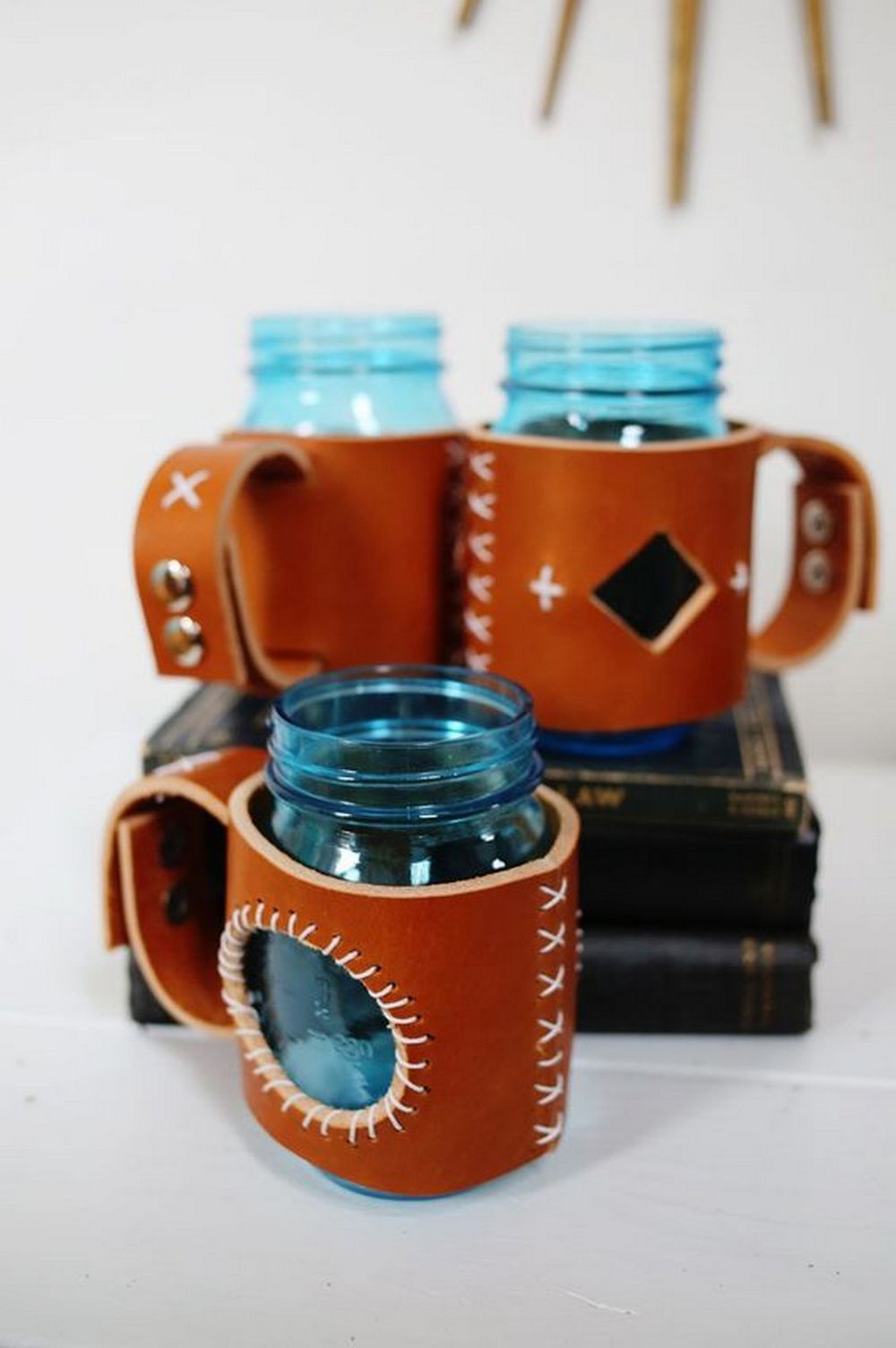
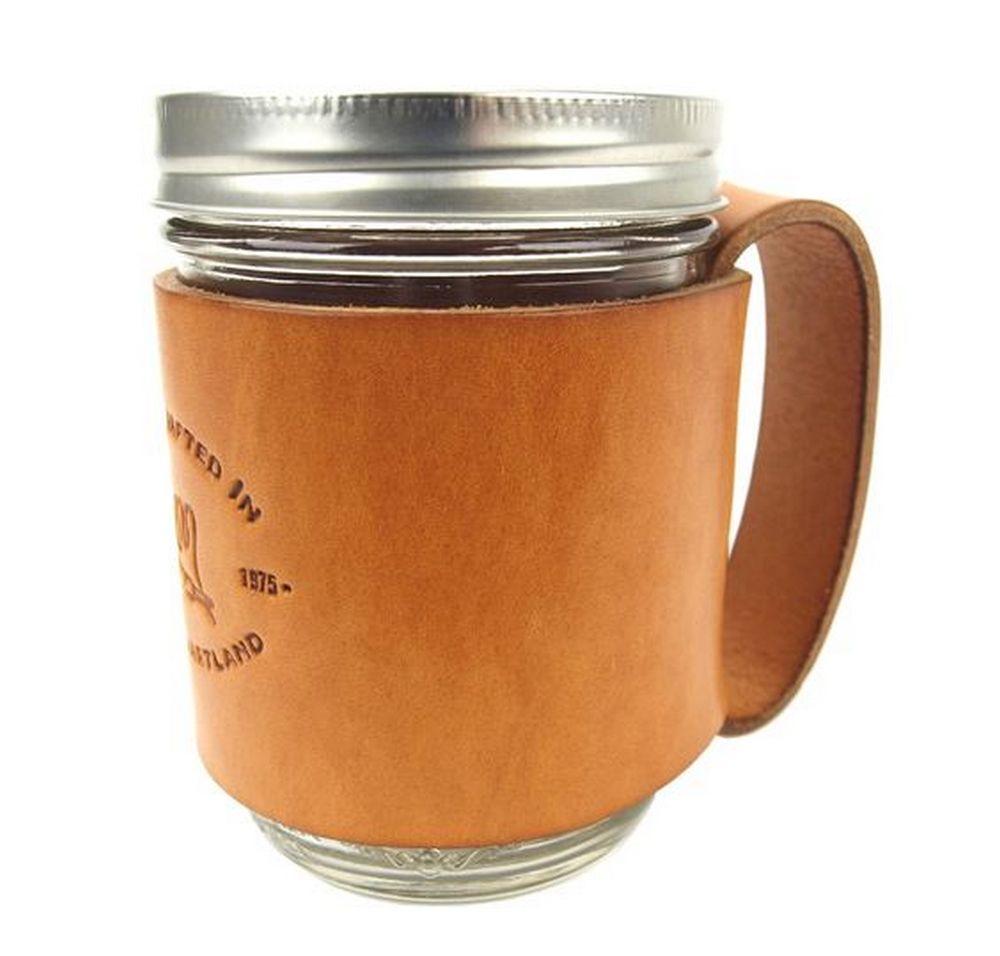


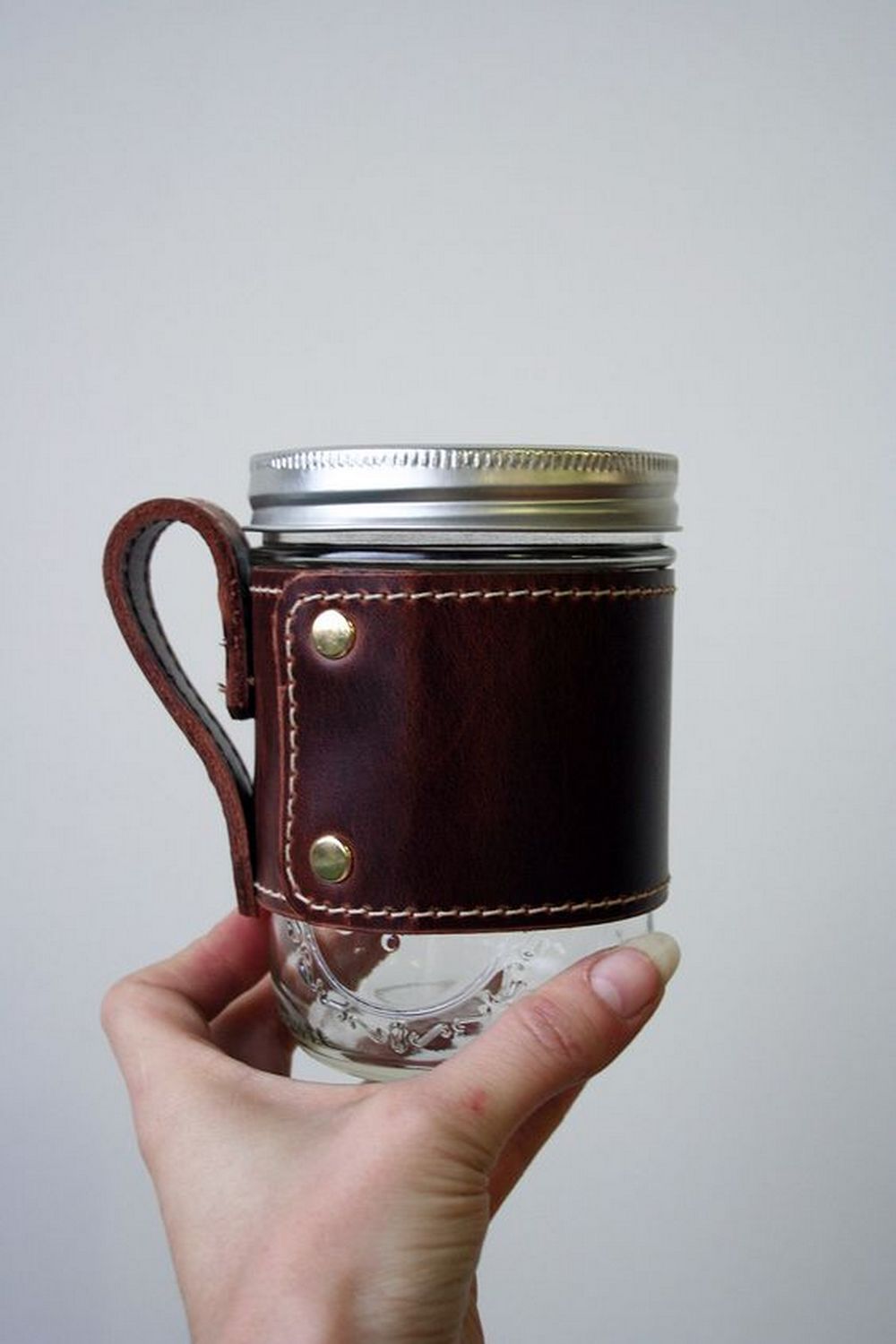
Do you want your own mason jar with a leather sleeve and handle? Watch the video below…
Choosing the Right Leather for Your Project
Selecting the appropriate leather for your DIY mason jar leather sleeve and handle is crucial for both the aesthetics and durability of your project. Leather varies widely in quality, finish, and texture, influencing not only the look but also the functionality of the finished product.
Here’s how to choose the best leather to ensure your leather sleeve and handle are both stylish and practical.
Understand Leather Types
- Full-Grain Leather: This is the highest quality leather, showcasing the natural texture of the animal skin. It’s extremely durable and ideal for projects like a leather sleeve and handle that require strength and longevity. Full-grain leather develops a patina over time, enhancing its aesthetic appeal.
- Top-Grain Leather: A more refined version, top-grain leather has a thinner layer than full-grain and is smoother and more flexible. It’s suitable for projects where you want a balance between flexibility and durability.
- Genuine Leather: Often more affordable, genuine leather is made from the remaining layers of hide after the top is split off. It’s less durable but can be used for decorative elements on your leather sleeve and handle if budget constraints are a concern.
Consider the Finish
- Aniline Leather: This type is dyed exclusively with soluble dyes, maintaining the natural surface of the hide. The result is rich in color, offering a premium look for your leather sleeve and handle. It’s perfect for those who want to showcase the raw beauty of leather.
- Semi-Aniline Leather: Slightly pigmented, this leather type strikes a good balance between natural aesthetics and product longevity. It can withstand more wear and tear while still maintaining the natural characteristics of the hide.
- Pigmented Leather: If you’re looking for durability and resistance to staining, pigmented leather might be the choice for you. It’s particularly practical for leather sleeves and handles that will be frequently used and handled.
Test the Leather
Before purchasing, if possible, get samples of the leather to test and feel. Consider the thickness and flexibility—attributes that will affect how easy it is to work with the leather when crafting your sleeve and handle. This hands-on approach will help ensure you select the right type for your project’s needs.
By understanding the different types of leather and considering your project’s specific requirements, you can choose the best material to create a durable and attractive leather sleeve and handle for your mason jars. This selection process is a critical step in achieving the desired outcome for your DIY endeavor.
Maintenance and Care for Leather Accessories
Maintaining the quality and extending the lifetime of leather accessories is dependent on proper maintenance and care. With proper treatment, leather is a naturally occurring material that can last for decades. These are some important guidelines and advice to help your leather sleeve and handle remain looking their finest over time.
Regular Cleaning
Dust and Dirt Removal: Starting with a soft, dry cloth, carefully wipe your leather accessories to eliminate surface dust and filth. This is particularly crucial for often-handled objects like a leather sleeve and handles.
Using the Right Cleaner: Using a cleaner made especially for leather will help you to get a deeper clean. On a delicate cloth, dab a tiny bit of cleaning and softly circularly massage it over the leather. Steer clear of using strong detergents or house cleansers that could rob the leather of its natural oils.
Conditioning the Leather
Importance of Conditioning: Leather can dry out and become brittle if not properly conditioned. Use a quality leather conditioner every few months to keep the leather supple and prevent cracking.
Application Technique: Apply the conditioner with a soft cloth, working it into the leather in a circular motion. Allow it to absorb and dry naturally. This step is crucial for items like your leather sleeve and handle, as it helps maintain their durability and aesthetic appeal.
Protecting Leather
Avoiding Extreme Conditions: Keep leather accessories away from extreme heat, cold, and humidity which can cause leather to warp, crack, or mildew. Never store your leather sleeve and handle in plastic bags or non-breathable covers.
Water and Stain Protection: Consider using a water repellent designed for leather to help protect against spills and stains. Apply it according to the manufacturer’s instructions, ensuring even coverage without saturating the leather.
Proper Storage
Storing When Not in Use: When not in use, store your leather sleeve and handle in a cool, dry place. Maintain the shape of the sleeve by stuffing it lightly with acid-free tissue paper which prevents creasing and helps absorb any excess moisture.
By following these maintenance and care tips, you can ensure that your leather sleeve and handle remain in excellent condition, preserving both their functionality and appearance. Regular care not only enhances the look of your leather accessories but also contributes to their longevity, making your DIY project a lasting treasure.
Conclusion
Making a leather sleeve and handle for mason jar mugs gives regular jars fashionable, useful drinkware. This do-it-yourself project is a fantastic way to give your house a personal touch or create unusual presents for loved ones. Making sure your works are durable and beautiful depends on choosing appropriate tools and supplies. These leather-enhanced mason jars can become a beloved regular item with some imagination and care.








